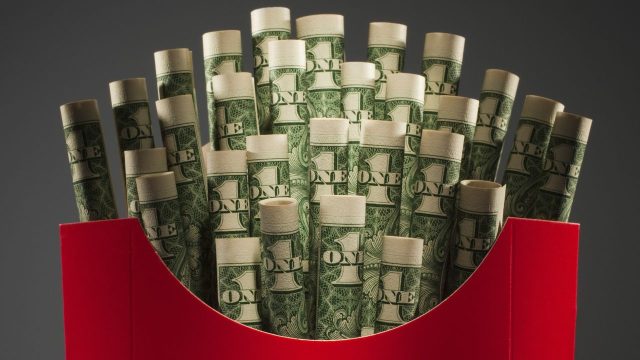
McDonald’s golden arches might as well be made of real gold and Burger King’s burgers may be reserved for kings. Fast food was once a cheap and accessible source of food, but now many lower-income Americans are being priced out of the restaurants. This is largely attributed to higher prices coupled with the high cost of living. At the same time, the gap between the wealthy and the poor is widening, making upward mobility difficult.
Why is fast food more expensive?
Across the country, prices are rising across the board, including at fast food restaurants. “Higher costs of restaurant essentials, such as beef and salaries, have pushed food prices up and driven away lower-income customers,” said the Los Angeles Times. The average price of a menu item at McDonald’s increased by approximately 40% between 2019 and 2024, according to a company fact sheet.
At the same time, consumer income is not keeping up with the cost of living. “You’re seeing across the country, rents are at pretty high levels. You’re seeing food prices, whether it’s in restaurants or grocery, you’re seeing food prices are high. You’re seeing child care is high,” said McDonald’s CEO Chris Kempczinski to investors. “There’s some significant inflation there that the low-income consumer is having to absorb.” McDonald’s is not the only chain seeing fewer customers. Chipotle, Burger King and Wendy’s have also reported fewer lower-income patrons. Some restaurants have attempted to create value menus with cheaper items to bring back clientele.
President Donald Trump attended McDonald’s Impact Summit on Nov. 17 and praised McDonald’s for “recommitting to affordable options.” He also claimed that the “Biden administration started the affordability crisis,” and that his administration was “ending it.” However, the Trump administration has played a significant role in making fast food more expensive. “Price hikes, in part due to the Trump administration’s tariffs, disproportionately affect lower-income Americans since they spend more of their incomes on goods than services, which are not directly impacted by levies,” said The Independent.
What are the economic outcomes?
Economic strain is not all equal. Over time, the U.S. economy has been turning more K-shaped. This means that the “high-earner cohort” is “doing better and better while others fall further down the economic ladder,” said NBC News. This has particularly affected those aged 25 to 30. This “group is facing several headwinds, including unemployment, increased student loan repayment and slower real wage growth,” said Chipotle CEO Scott Boatwright to NBC News. As a result, those who are not rich are opting to budget and eat at home. On the flip side, the global luxury conglomerate that includes brands like Christian Dior and Tiffany & Co., had a “better-than-expected quarter, sending its stock 12% higher,” said USA Today.
Affordability continues to be a major policy issue for Americans, and “discontent will continue to increase so long as they perceive affordability as an issue, even if economic indicators improve,” said Fortune. This will “not only keep lower-income Americans from spending, but could also lead some to harbor anger that could drive workplace resentment.” That is to say, confidence in today’s economy is deep-fried.
Cheap meals are getting farther out of reach






